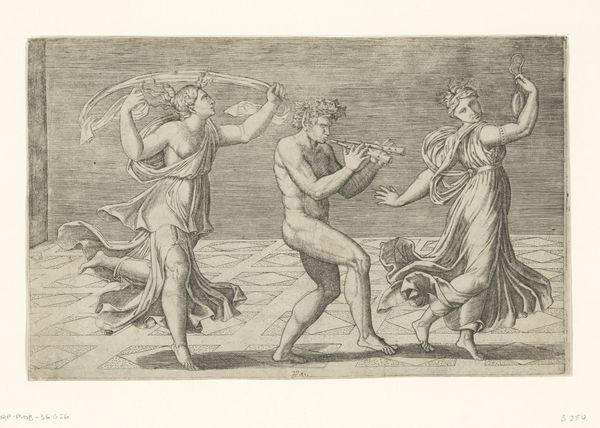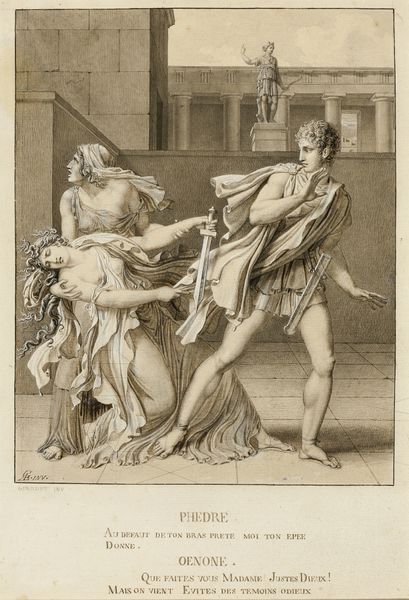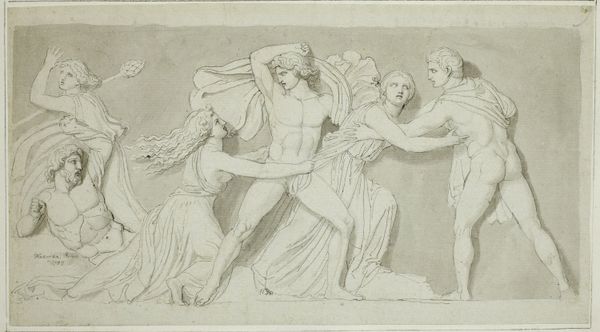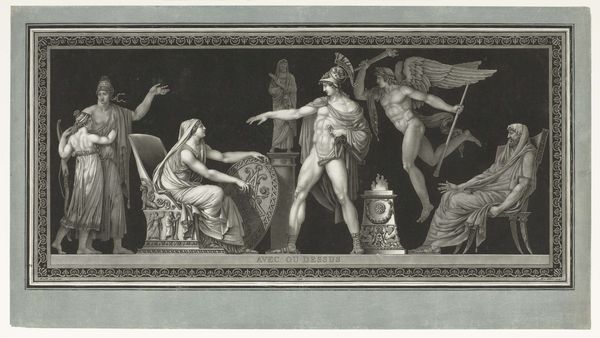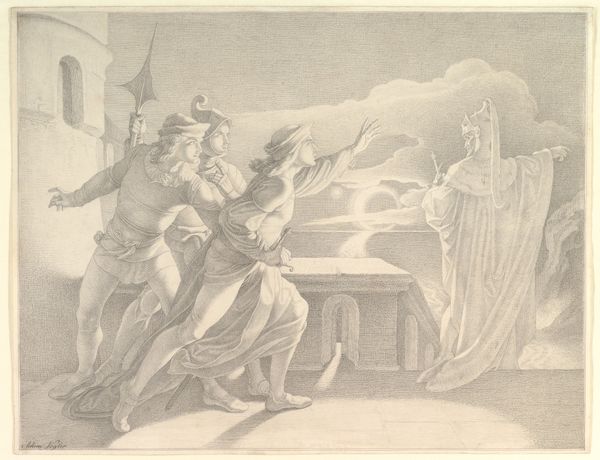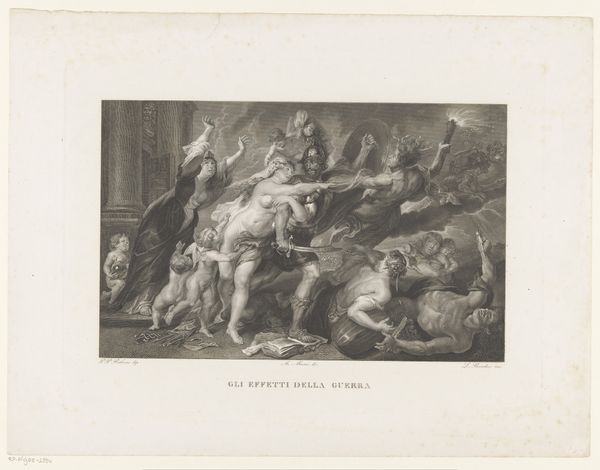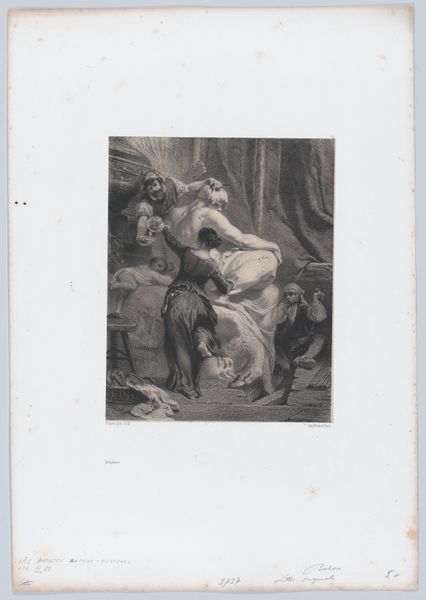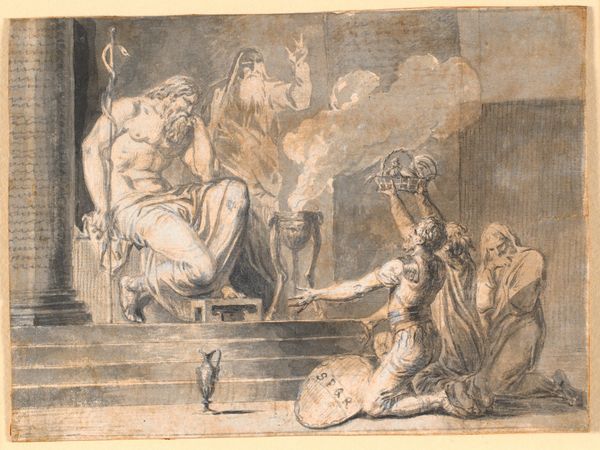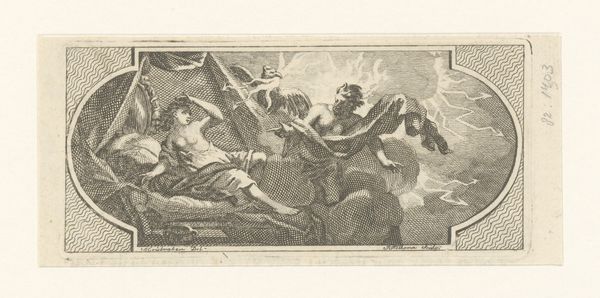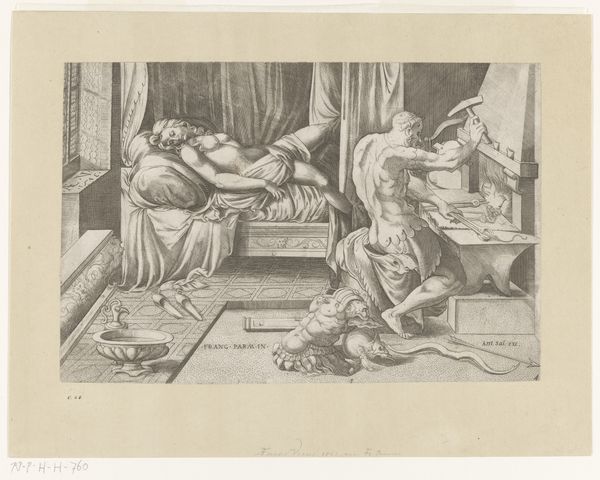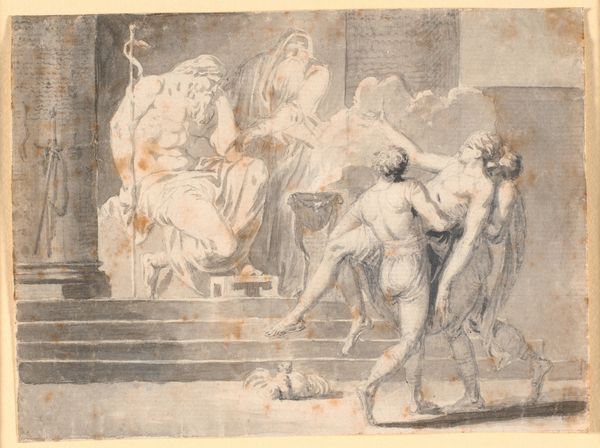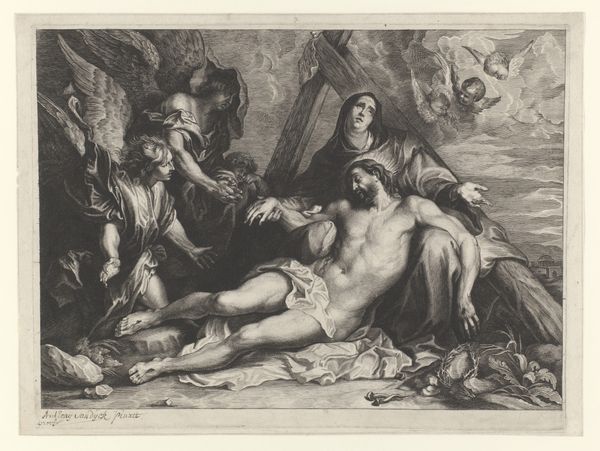
watercolor
#
neoclacissism
#
allegory
#
landscape
#
figuration
#
watercolor
#
watercolour illustration
#
history-painting
Dimensions: height 240 mm, width 464 mm
Copyright: Rijks Museum: Open Domain
Editor: This watercolor, "Death of Priam" by Tommaso Piroli, made in the late 1790s, is undeniably dramatic. The figures are so theatrical, caught in these exaggerated poses of grief and terror. What socio-political factors might have led to this Neoclassical obsession with such violent, history-laden subjects? Curator: Excellent observation! Neoclassicism, and especially history painting, thrived during periods of revolution and upheaval. Think about the French Revolution, happening around the same time this piece was created. Artists were looking to the past – to ancient Greece and Rome – for models of virtue, civic duty, but also, cautionary tales of tyranny and its consequences. Piroli wasn't just illustrating a scene from the Trojan War, he was engaging in a dialogue about contemporary political issues through allegory. Consider who would commission and consume such imagery at the time. What messages about power, justice, and the role of citizens might it convey, or subvert? Editor: So the drama is intentional, meant to provoke a particular reaction in its 18th-century audience? Does the print format also have a social implication, compared to, say, a large-scale oil painting? Curator: Precisely. The drama served a purpose beyond mere spectacle. Prints made art accessible to a broader public, moving away from the exclusive patronage of the aristocracy, creating public sentiment. Works like these helped cultivate a sense of shared identity and values. How might a mass audience interpret or even repurpose it for its own agendas? Editor: That’s a totally new way of seeing Neoclassical art for me – not just as beautiful and ordered, but as active participants in shaping social and political thought! Curator: Indeed. And by considering the audience and the format, we understand the active role art plays in reflecting, reinforcing, or challenging dominant power structures.
Comments
rijksmuseum about 2 years ago
⋮
Standing on the altar dedicated to the god Zeus is Neoptolemus, the son of the Greek hero Achilles, about to kill Priam, the king of Troy. In the foreground is the desecrated corpse of Priam’s eldest son Hector. Priam’s death marked the end of the Trojan War. The way in which the etching is coloured with opaque paint closely resembles Canova’s painting style: he also used vivid colours against a black background.
Join the conversation
Join millions of artists and users on Artera today and experience the ultimate creative platform.
